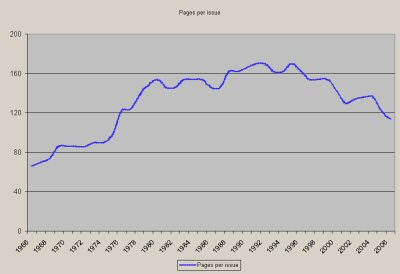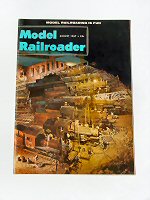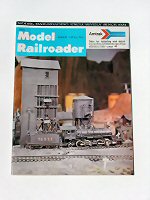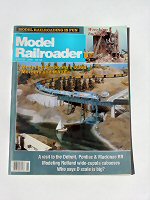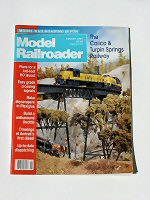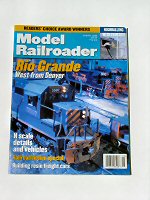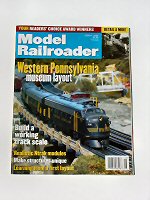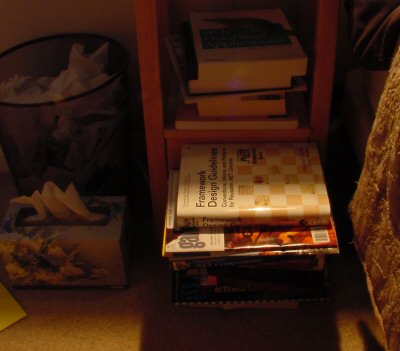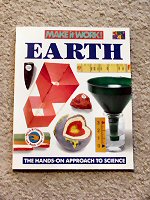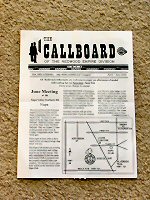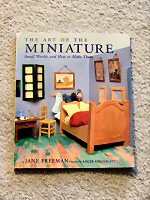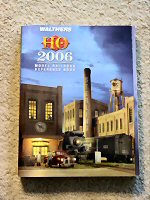Mon 21 Aug 2006
40 Years of August in Model Railroader – Part 5
Posted by Daniel Swearingen under Books & Mags , Model Railroader , Model Railroading1 comment / Leave a comment
How do you judge whether an issue is good or bad? I do it by how many good articles are in the issue. A “good” article is one that I will still refer to years later – either for content or visuals.
In looking at this stack of magazines I see that I also weigh in some other factors – in this order:
The cover image. Sad but true. A good cover image really pulls me in and makes me want to look inside. If the picture on the cover is good I’m more than half way to feeling the whole issue is going to be good.
The articles. Next clearly are the articles in the magazine. A good series like Olson or Furlow’s layout series almost make it a slam dunk.
Lastly: editorials and regular columns. If the first two things are good; the cover art and the articles, I am much more likely to settle down and read all the editorial and regular column content.
These are what I found when I would go through all these issues trying to get a handle on what made an issue “good” versus “bad.”
As I looked at each issue I would give it a score of one for each item that I liked about the issue. I found that editorials and regular columns did not really count in my overall scoring: if there was a lousy cover and no good articles, it simply did not matter that Wescott’s editorial was brilliant.
Scores ranged from 0 = bad issue to 3 = great issue.
| Great | Good | so so | bad |
| Year | Good Articles | Editor | |
| 1966 | 2 | Wescott | |
| 1967 | 2 | - | |
| 1968 | 2 | - | |
| 1969 | 2 | - | |
| 1970 | 0 | - | |
| 1971 | 1 | - | |
| 1972 | 1 | - | |
| 1973 | 1 | - | |
| 1974 | 0 | - | |
| 1975 | 3 | - | |
| 1976 | 3 | - | |
| 1977 | 0 | Wescott | |
| 1978 | 1 | Larson | |
| 1979 | 0 | - | |
| 1980 | 1 | - | |
| 1981 | 1 | - | |
| 1982 | 2 | - | |
| 1983 | 2 | - | |
| 1984 | 2 | - | |
| 1985 | 0 | - | |
| 1986 | 1 | - | |
| 1987 | 2 | - | |
| 1988 | 0 | - | |
| 1989 | 0 | - | |
| 1990 | 1 | - | |
| 1991 | 0 | - | |
| 1992 | 0 | - | |
| 1993 | 0 | Larson | |
| 1994 | 0 | Sperandeo | |
| 1995 | 0 | - | |
| 1996 | 3 | - | |
| 1997 | 0 | - | |
| 1998 | 3 | - | |
| 1999 | 1 | - | |
| 2000 | 0 | - | |
| 2001 | 0 | Sperandeo | |
| 2002 | 1 | Thompson | |
| 2003 | 0 | - | |
| 2004 | 0 | - | |
| 2005 | 3 | - | |
| 2006 | 0 | Thompson |
Just looking at my color coding things seem to go to crap around 1987. After that there are occaional good or great issues (2′s or 3′s) but lots of loser issues. Mostly loser issues. Although the magazine grew in size under Larson, the quality of his last six years looks much lower than his first 10 years.
Sperandeo batted about 375 (3 issues out of the dirt) but only two great issues over 8 years. Admittedly, I’m only looking at August but frankly, this does fit pretty closely what I’ve felt about Model Railraoder for a long time.
On this survey it’s hard to tell how Thompson is doing. That one 2005 issue was really good. I hope he can keep it up.
I’ll be continuing with some concrete examples of what I think are good articles and covers — as well as some exmples of bad stuff.
40 Years of August in Model Railroader – Part 1
40 Years of August in Model Railroader – Part 2
40 Years of August in Model Railroader – Part 3
40 Years of August in Model Railroader – Part 4
40 Years of August in Model Railroader – Part 5
40 Years of August in Model Railroader – Part 5½
40 Years of August in Model Railroader – Part 6
40 Years of August in Model Railroader – Part 7
40 Years of August in Model Railroader – Part 8
40 Years of August in Model Railroader – Part 9

